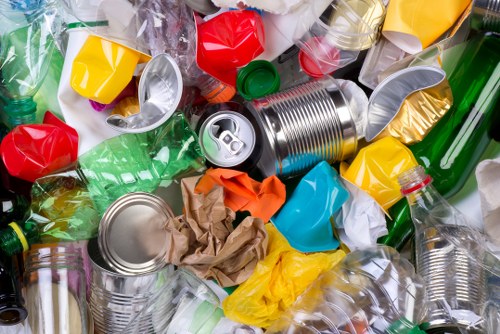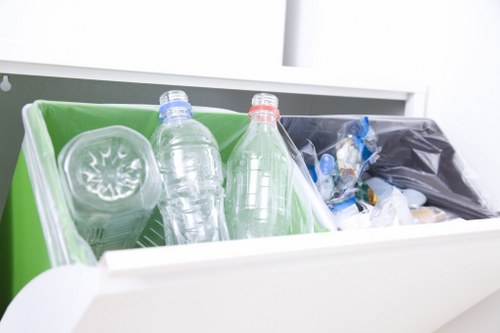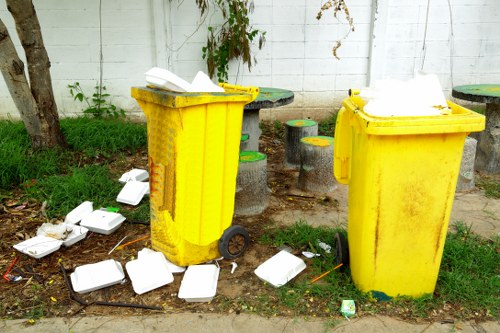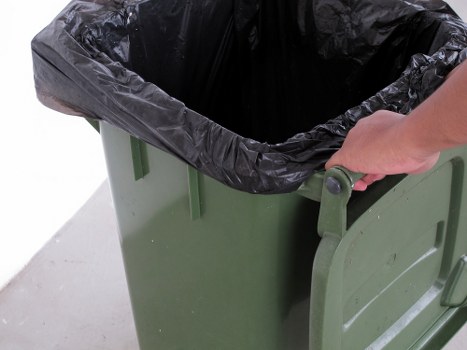Waste Removal in Builders Waste: A Comprehensive Insight

Builders waste removal is an essential and evolving field within the construction industry. Over the years, the accumulation of construction debris has created new challenges and opportunities for waste management professionals. In today’s rapidly developing world of architecture and infrastructure, the responsible disposal of builders waste is more than just a regulatory demand—it is a commitment to sustainable and safe project execution. As construction projects evolve from small residential renovations to large-scale commercial builds, the volume and complexity of waste have increased, prompting industry professionals to seek innovative strategies to manage and recycle materials efficiently. This article explores every facet of waste removal in builders waste, providing insights into both the challenges and opportunities that exist in disposing of construction debris in a sustainable manner.
The process of waste removal starts at the planning phase of any construction project. Recognizing the types of waste generated—from raw materials like concrete, wood, and metal to hazardous substances introduced during demolition—forms the basis for an effective disposal strategy. Over time, several governmental and non-governmental organizations have imposed strict guidelines and robust regulations, making it imperative for builders to invest in proper waste management solutions. These measures not only prevent environmental degradation but also pave the way for innovative recycling systems and cost-saving opportunities. With a clear understanding of the amount, type, and composition of construction debris, project managers can design integrated solutions that target the reduction, reuse, and recycling of waste materials.
Today, the significance of managing builders waste extends beyond regulatory compliance. It is a business imperative that directly impacts project budgets, timelines, and the overall market sustainability. Many construction companies have turned to advanced waste removal strategies that incorporate technology-driven innovations and logistical optimizations. As a result, the industry sees a continuous shift toward more eco-friendly practices and a reduction in carbon footprints. These innovative methods not only elevate operational efficiency but also create a blueprint for responsible urban development. By instilling an ethos of environmental care into every stage of the construction process, companies are ensuring that the legacy of modern infrastructure remains harmonious with the natural world.
Understanding Builders Waste

Builders waste is a diverse category of byproducts generated during the construction, renovation, and demolition processes. It encompasses an array of materials ranging from concrete and bricks to timber and glass. The nature of the waste is determined by the materials used in the building process, which can vary significantly from one project to another. To manage builders waste effectively, companies and contractors must first understand its source and composition. This comprehension aids in developing tailored disposal plans that ensure the safe segregation and recycling of different materials, thereby reducing the risk of contamination and enhancing the overall efficiency of waste handling processes.
Different types of construction debris require different waste removal techniques. For example, concrete and masonry elements may be crushed and repurposed as aggregate, whereas wooden materials might be chemically treated and reprocessed or reused in innovative ways. In industries where hazardous substances are involved, strict regulations necessitate specialized treatment and disposal measures. By deploying knowledge and resources, construction professionals can turn challenges into opportunities by integrating modern technologies with traditional waste removal practices. This method not only augments the recycling rate but also contributes to a decrease in landfill volumes and overall environmental impact.
Historically, builders waste was simply discarded at the nearest landfill with little thought given to the negative consequences of such practices. However, as environmental concerns have risen in tandem with the growth of the construction industry, there has been a significant shift toward scrutinizing every aspect of waste generation and disposal. Today, building companies are increasingly encouraged to implement sustainable waste management plans that emphasize sorting, recycling, and even repurposing materials wherever feasible. This paradigm shift is enabling the industry to become more resource-efficient, reduce its ecological footprint, and contribute positively to communities worldwide.
Challenges in Construction Debris Management

The removal of builders waste is accompanied by unique challenges that range from logistical hurdles to compliance with ever-changing local and international regulations. One of the primary difficulties faced by waste management professionals is the unpredictable volume and composition of construction debris. Projects can suddenly generate large quantities of material, making it difficult to predict the ultimate disposal process. Further complicating matters are stringent environmental standards that often require detailed documentation and specialized disposal methods. These factors collectively increase the complexity of waste removal and force project managers to adopt dynamic and adaptable approaches to meet both regulatory and operational requirements.
Key Obstacles in Managing Construction Debris
Another significant challenge involves the safe handling and segregation of hazardous versus non-hazardous materials. Many construction sites produce a mix of both, which requires different treatment paths. For instance, chemical residues and contaminated materials must be isolated and disposed of using specialized procedures, while recyclable materials need targeted methods to ensure their proper reprocessing. The inefficiencies in waste segregation not only result in environmental liabilities but can also lead to increased operational costs and delays in project timelines. In addition, the scarcity of recycling facilities or dedicated processing centers in certain regions further exacerbates these challenges, calling for coordinated efforts between construction companies, local governments, and waste management organizations to invest in better infrastructure.
Logistical issues compound these operational challenges. Transportation of bulky materials from remote construction sites to centralized recycling centers or disposal facilities is not always straightforward. High transportation costs, along with potential damage to roads and infrastructure, often hinder the efficiency of waste removal services. Moreover, variations in legal frameworks and enforcement of waste management laws from one jurisdiction to another necessitate a flexible yet standardized operating model. Professionals in this field are therefore required to maintain a deep understanding of local policies while adapting global best practices. It is crucial for stakeholders to engage in continuous dialogue and partnership building to identify bottlenecks and develop innovative solutions that make waste removal a smoother, more integrated process.
Best Practices and Innovative Techniques

Modern waste removal in builders waste involves an array of best practices that are designed to enhance efficiency and reduce environmental impact. One of the foremost practices is the early integration of waste management planning into the construction project. By involving waste management experts during the planning phase, construction teams can accurately estimate the types and volumes of debris that will be generated, allowing for the proper allocation of resources. This proactive approach minimizes waste mismanagement and ensures that all materials are disposed of in a compliant and environmentally responsible manner. Adopting such integrated planning methods can lead to reduced overhead costs and a significant improvement in efficiency, ultimately resulting in a more streamlined project lifecycle.
Key Strategies for Effective Waste Removal
Implementation of advanced sorting technologies and recycling systems is another cornerstone of modern builders waste removal. For instance, automated sorting facilities can identify and separate recyclable materials from non-recyclable debris at high speeds. This not only enhances the overall recycling rate but also ensures that fewer resources are wasted in the process. Furthermore, adopting practices such as on-site segregation and the use of dedicated containers for different types of waste can dramatically improve the efficiency of waste handling operations. Techniques such as these are being widely adopted across the industry and have proven to be successful in mitigating the adverse effects of construction debris while adhering to environmental standards.
Advanced Technologies in Waste Segregation
In line with technological advancements, the use of digital management systems has revolutionized the way construction debris is tracked and managed. Software solutions now allow for the precise monitoring of waste streams from the point of generation to the final disposal or recycling site. With real-time data analytics, construction managers can promptly adjust strategies to prevent overaccumulation of waste or mishandling of hazardous materials. These digital innovations, when combined with traditional management practices, create a robust framework that not only optimizes the disposal processes but also instills a culture of environmental responsibility throughout every phase of construction. This approach highlights the industry's commitment to sustainability while also paving the way for continuous improvement and innovation in waste management techniques. Book your service now to experience the benefits of these advanced solutions firsthand and transform the way your projects manage waste removal.
Environmental Impact and Future Strategies

The environmental consequences of improper management of builders waste are far-reaching, affecting not only the immediate area but also contributing to broader ecological challenges. The improper disposal of construction debris can lead to soil degradation, water pollution, and increased greenhouse gas emissions. However, by embracing sustainable waste removal practices, the construction industry can significantly mitigate these negative effects. The integration of recycling, reuse initiatives, and energy recovery systems plays a vital role in reducing the overall environmental impact. Moreover, the adoption of strict safety protocols and monitoring systems ensures that all aspects of waste removal are conducted in a manner that safeguards the environment while supporting economic growth.
Sustainable Approaches to Waste Management
The future of builders waste disposal lies in the adoption of sustainable methods that not only focus on compliance but also on proactive environmental stewardship. Innovations in recycling technology are expected to expand the range of materials that can be efficiently processed, thus reducing the load on traditional landfills. New governmental policies and incentives that encourage green construction practices are also driving the industry to innovate continuously. For instance, some regions have begun to implement zero-waste construction practices, where every material is either recycled or repurposed, leaving minimal waste behind. These initiatives showcase the potential for a future where builders waste is not seen as a mere byproduct but as a resource that can contribute to the circular economy.
Looking forward, the emphasis on environmental sustainability is set to reshape every aspect of construction waste management. As technological advancements merge with refined operational practices, businesses across the globe are beginning to re-evaluate their waste disposal methods. This innovative mindset will continue to drive progress in the field, ensuring that waste removal is not only effective but also aligned with the broader goals of environmental protection and public health. With rising public awareness and stricter enforcement of environmental laws, it is imperative for industry players to stay ahead of the curve. Contact us today to learn how our forward-thinking strategies can help you achieve compliance and support sustainable construction practices in your next project. By partnering with experts who are dedicated to environmentally responsible waste management, you secure a cleaner, greener future for both your projects and the planet.